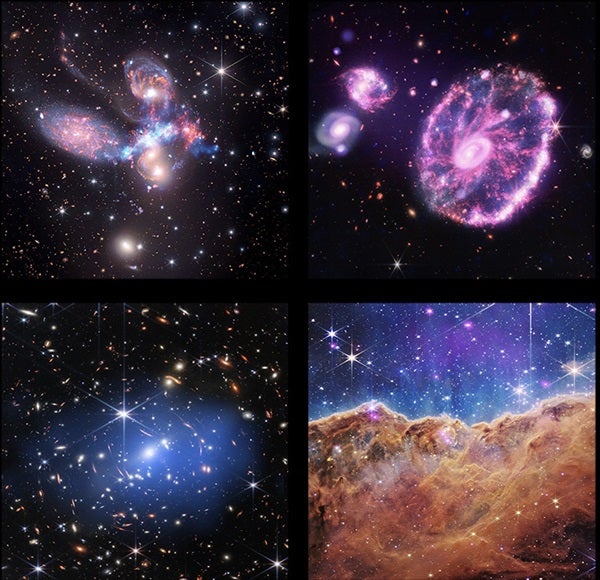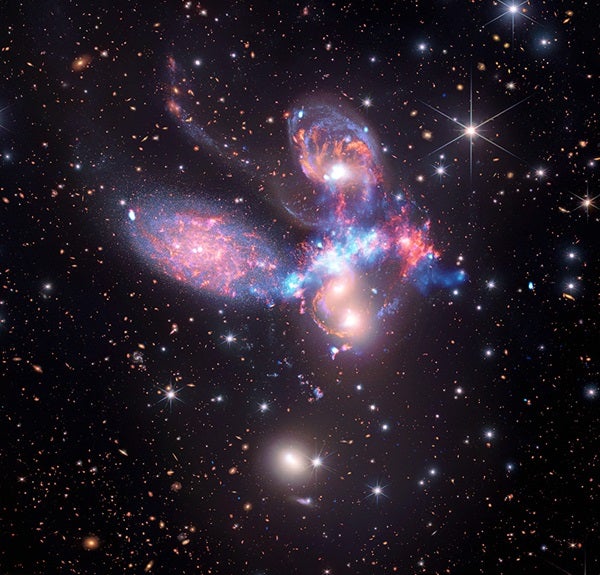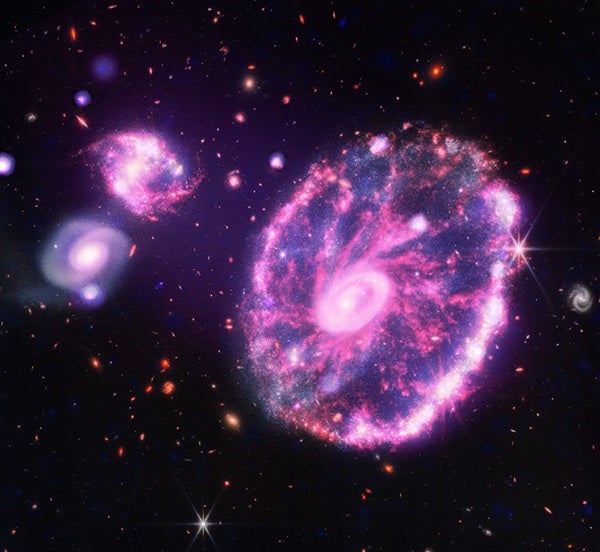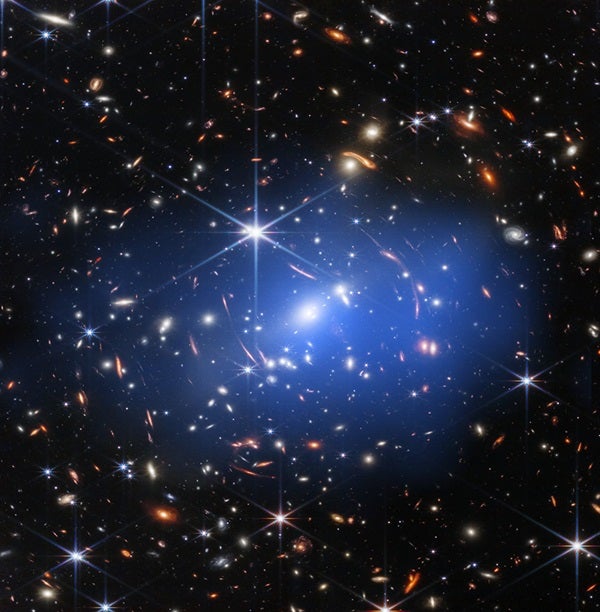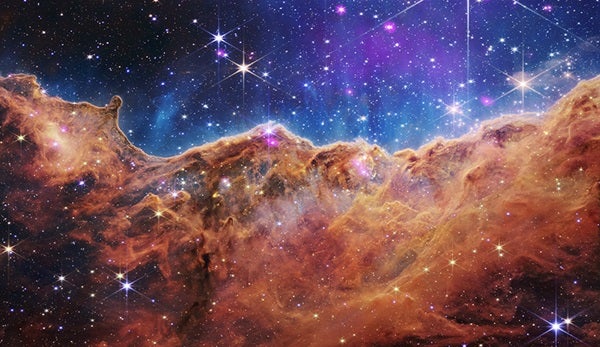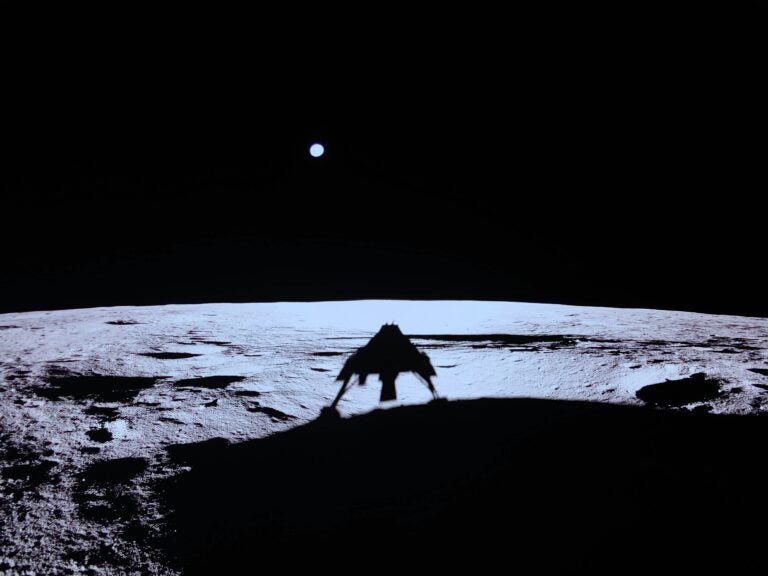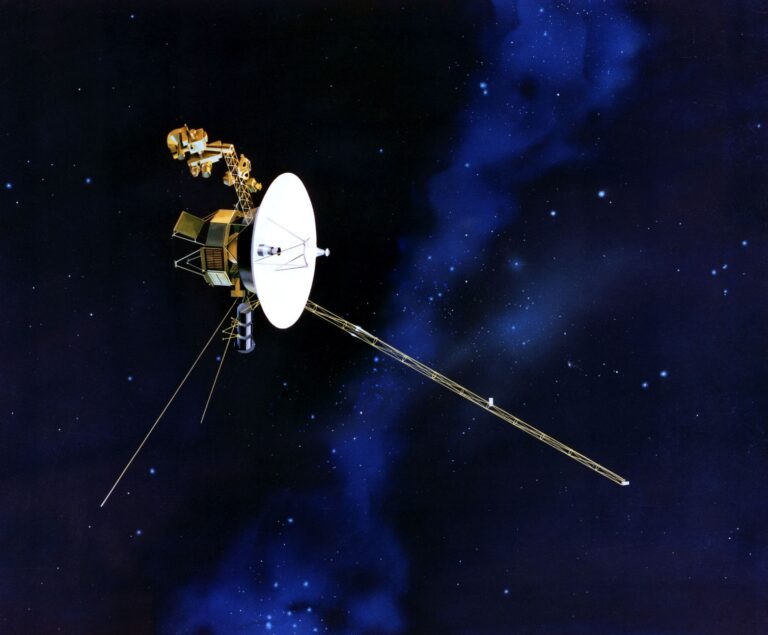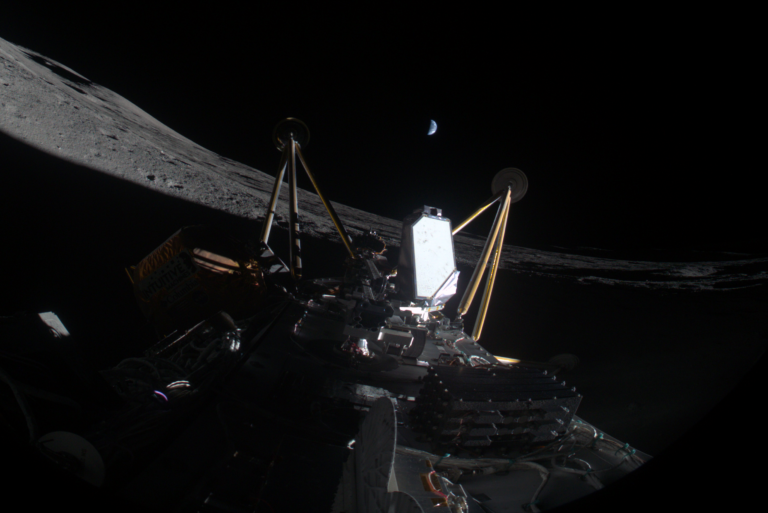Not since Hubble’s heyday has a space telescope captured our interest — or our news cycle — quite like the James Webb Space Telescope (JWST). And some of its latest photos are no exception.
After months of calibrations, JWST released its first images this summer, with shots of Stephan’s Quintet, the Cartwheel Galaxy, SMACS 0723.3–7327, and the Carina Nebula’s Cosmic Cliffs. Now, after teaming up with NASA’s Chandra X-ray Observatory, JWST’s early images have already received a facelift. By adding X-ray data to JWST’s infrared observations, astronomers are able to learn more about the activity in areas JWST wasn’t able to explore.
In the original JWST image of Stephan’s Quintet, the close-knit galaxies’ cosmic embrace is shown in vivid red, orange, and green. But after adding Chandra’s X-ray data (light blue), astronomers found a shockwave that heats nearby gas to tens of millions of degrees as the galaxies tear through each other at around 2 million mph (3.2 million km/h), according to a Chandra news release.
Meanwhile, the X-rays (blue and purple) added to decorate the new pictures of the Cartwheel Galaxy reveal exploded stars, superheated gas, and neutron stars and black holes that are actively pulling material from their companions.
Although stunning, JWST’s original view of SMACS 0723.3–7327 didn’t quite capture a key part of it. According to the release, this group of galaxies, located some 4.2 billion light-years away, hosts large pockets of hot gas with a combined mass of some 100 trillion Suns. These were detected in the Chandra data (blue), revealing itself as a giant blob in the center of the image. Not seen in this shot is the copious dark matter that also calls this region home, which neither telescope is capable of detecting.
JWST’s final — and arguably most beautiful — retouched image is of the Carina Nebula’s Cosmic Cliffs, which is the glittering edge of the young star-forming region known as NGC 3324. The added X-ray data (pink) is sprinkled throughout the cliffs. These pink speckles are young stars that are just 1 million to 2 million years old, which shine brighter in X-rays than older stars.
The James Webb Space Telescope will continue collaborating with many of NASA’s other complementary instruments over the course of its life, driving home the old adage “The more the merrier!”

